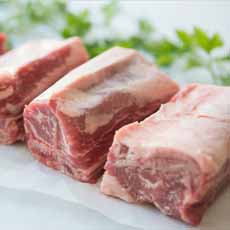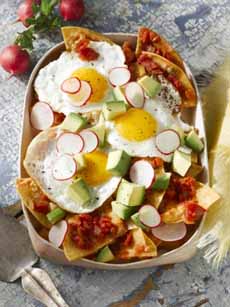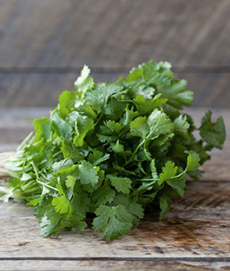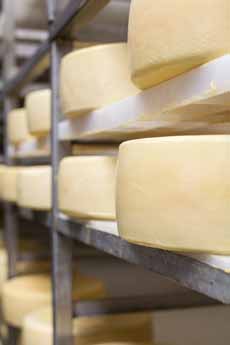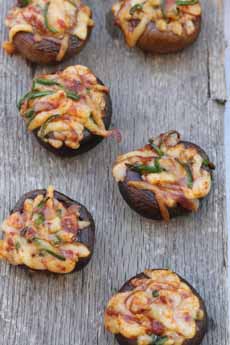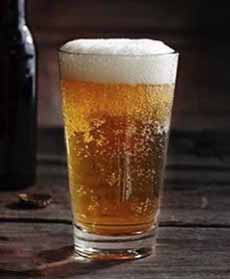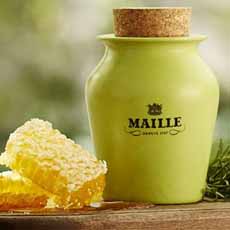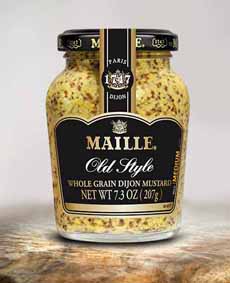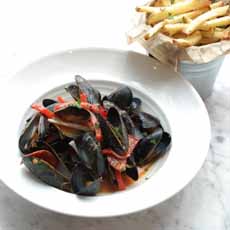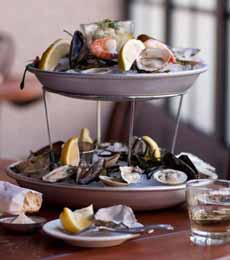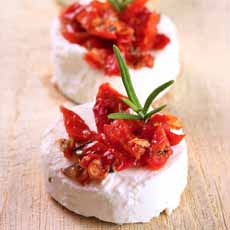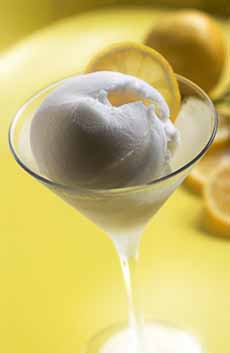|
April 24th is National Sauvignon Blanc Day, a grape that grows easily around the world and makes wines that are popular wherever they are made.
Sauvignon Blanc (SAW-vin-yawn BLON) is an AOC-classified* French wine that is planted around the world. Its origin is the eastern part of France’s Loire Valley, where it abuts Burgundy.
In France, where wines are known by their region or city, the Loire produces two major appelations: Sancerre after the city in Sancerre on the left bank of the Loire River, and Pouilly-Fumé from the town of Pouilly-sur-Loire, on the opposite bank. Elsewhere in the world, wines are known by their grape varietal names (i.e., sauvignon blanc).
In France, the grape is also used to make White Bordeaux (Bordeaux blanc), commonly blended with Semillon and Muscadelle, and often barrel-fermented and aged.
A smaller amount of Sauvignon Blanc is grown in the southwest of France, in Languedoc-Roussillon.
There is one White Burgundy made from Sauvignon Blanc: St. Bris, and its about $12 (photo #5, courtesy Goisot).
The Loire Valley also grows a smaller amount of red wine grapes (about 25% of total production), used to make red Sancerre and rosé.
> The history of wine.
> Styles of Sauvignon Blanc by region, below.
> The history of Sauvignon Blanc, below.
> The six noble grapes, below.
> Sauvignon Blanc food pairings, below.
THE DELIGHTS OF SAUVIGNON BLANC
The Sauvignon Blanc grape produces refreshing, dry, white wines with one of two key flavor profiles: grapefruit/citrus or grassy/herbaceous, depending on the terroir†. Both are delicious.
The wine is known for high acidity, light to medium body and medium alcohol. It is most often unoaked.
It is also very affordable, with bottles available from around $10, many in the $12 to $15 range, and the finest of the breed (such as Sancerre’s Ladoucette Comte Lafond) in the $35 to $45 range.
By comparison, Chablis is double the price, with Grüner Veltliner in the middle.
If you like white wines such as Chablis and Grüner Veltliner, you’ll likely be a fan of Sauvignon Blanc.
Its acid backbone complements everything from plateaux de fruits de mer (raw seafood platters) and grilled chicken and fish to buttery sauces and rich cheeses; although the AOC cheese of the Loire, chèvre (goat cheese), is its most popular pairing.
We go deep into food pairings at the end of this article. First, it’s important to understand the styles of Sauvignon Blanc.
________________
*AOC, an abbreviation of appellation d’origine contrôlée, is a legal designation that places rigid standards on how and where a French product can be produced. This ensures consistent quality and preserves its reputation.
†Pronounced tuhr-WAH, terroir is the French expression for sense of place, the unique environment in which something grows—its specific soil composition and microclimate. Microclimate includes temperature, amount of sunshine and rain. The flavor nuances of agricultural products, from grapes to olives to milk to cacao, is a function of its terroir.
________________
STYLES OF SAUVIGNON BLANC BY REGION
We start off with the tip to have a tasting get-together. If your group shares in the work, you can assign everyone a Sauvignon Blanc from a different region, and a food that goes with it.
The grape is relatively easy to grow, and thus is grown in more than 10 countries, from Canada to Italy to New Zealand to South Africa—even in Romania, Moldova.
With so many different terroirs and national preferences, you can find Sauvignon Blanc in a wide range of styles and flavors.
Sauvignon blanc delivers minerality and very high acidity. From there:
Cool regions like the Loire and New Zealand produce grassy and herbaceous flavors, with notes of lime, minerals and sometimes, honeydew melon.
Warm climates like California and South Africa produce fruity, citrussy wines.
The best regions for Sauvignon Blanc beyond the Loire Valley are California and Chile—but don’t let that stop you from trying examples from everywhere.
Many thanks to Wine Folly for making these invaluable distinctions:
> Australia’s Sauvignon Blanc Wines
Australia overall is a hot climate region, but there are cooler climate areas within Australia (Adelaide Hills, South Australia) suitable for growing good Sauvignon Blanc.
These terroirs generate flavors of kiwi, honeydew, and white peach with medium-high acidity and light body.
Wines from Western Australia (including Margaret River) have both vegetal and fruity flavors. Nuances of bell pepper and chervil mingle with passionfruit and minerality. The wines have high acidity and light body. Some high-end producers use oak for creaminess and texture.
> Chile’s Sauvignon Blanc Wines
Most exported Sauvignon Blancs come from Chile’s Central Valley. The terroir generates flavors of grass, lime juice, green banana and pineapple, and, unique to the area, a bit of salinity.
> France’s Sauvignon Blanc Wines
France is the world’s largest grower of Sauvignon Blanc. In the cooler climate of the Loire Valley, the wines yield flavors of cut-grass, nettles, elderflower, blackcurrant leaf and gooseberries combine with flinty minerality.
These are the classic flavors of Sauvignon Blanc. But you may prefer flavors from other regions.
Further south in Bordeaux, the terroir generates flavors of lemon pith, grass and gravelly minerals with high acidity and a simple light body. The high-end wines are often aged in oak, and develop other fruit flavors (gooseberry, kiwi, lemon curd, lemongrass, honeyed grapefruit) with a subtle nutty-creamy texture from the oak.
> Italy’s Sauvignon Blanc Wines
The majority of Sauvignon Blanc in Italy is produced in Friuli-Venezia Giulia, in the northeast bordering Austria. It is usually labeled as Sauvignon, as opposed to Sauvignon Blanc.
The primary flavors are fruity: gooseberry, orange blossom, pear and white peach. The acidity is very high and the body is light. High acidity and light body characterize more stringent wines, making this our least favorite country for Sauvignon Blanc.
> New Zealand’s Sauvignon Blanc Wines
New Zealand is a cool climate country and Sauvignon Blanc is the country’s most planted grape. It is grown in the northern part of the South Island, in the Marlborough region.
It is here that the wine is made in the most assertive style anywhere. Dpending on ripeness levels it can be more vegetal (e.g. green pepper) or smack of tropical fruit (grapefruit, guava, mango, passionfruit).
> South Africa’s Sauvignon Blanc Wines
The warm, warm climate of South Africa produces high-quality Sauvignon Blanc, mostly in the Western Cape region.
Most are not aged in stainless steel, but there are several smaller, more distinct areas that are known for producing barrel-fermented and aged (i.e., oaked) wines. Look for wines from Elgin, Franschhoek and Stellenbosch for these powerful oaked wines.
Most Sauvignon Blancs from the Western Cape have a light-medium body and acidity. Flavors include green herbs, green bell pepper and guava. High-end wines may show you jasmine, honeysuckle, Meyer lemon and nuttiness.
> Spain’s Sauvignon Blanc Wines
The majority of Spanish Sauvignon Blanc comprises value-driven bulk winegrows in the south, in La Mancha. However, there are a few quality producers elsewhere.
Look for wines from Castilla y Leon: medium-high acidity and medium-light body, with dusty minerality and flavors of bell pepper and honeydew melon.
Rueda produces high quality Sauvignon Blanc and Verdejo wines. The Verdejo grape produces wine with that tastes very similar to Sauvignon Blanc.
|
|

[1] A Sauvignon Blanc vineyard in California (photo © Ghielmetti Vineyard).

[2] Sauvignon Blanc grapes on the vine (photo © Italian Recipes [website no longer active]).

[3] In the glass, crisp and refreshing (photo © Betches).

[4] Our favorite: Ladoucette Comte Lafon, from Sancerre in the Loire Valley. (photo © Domaine Ladoucette).

[5] The only Sauvignon Blanc-based white Burgundy, Saint Bris AOC (photo © Domaine Grivot-Goissot).
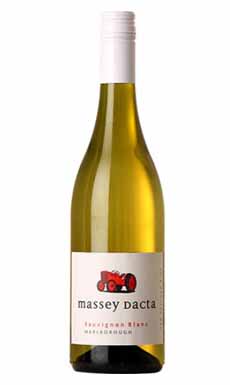
[6] Massey Ferguson is a manufacturer of agricultural equipment, including tractor used in vineyards. The slang word for the tractor in New Zealand is “dacta.” Yes, the vineyard is named after its tractor! It’s a favorite of one of our wine consultants, Mary Taylor, and it’s around $15 (photo © Massanois).
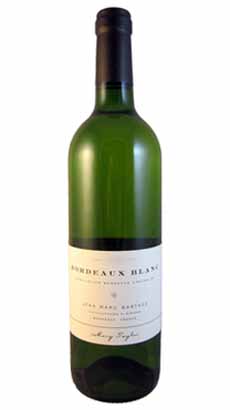
[7] Another Mary Taylor favorite: this Sauvignon Blanc-based Bordeaux Blanc from Jean Marc Barthez (photo © Jean Marc Barthez).
|

